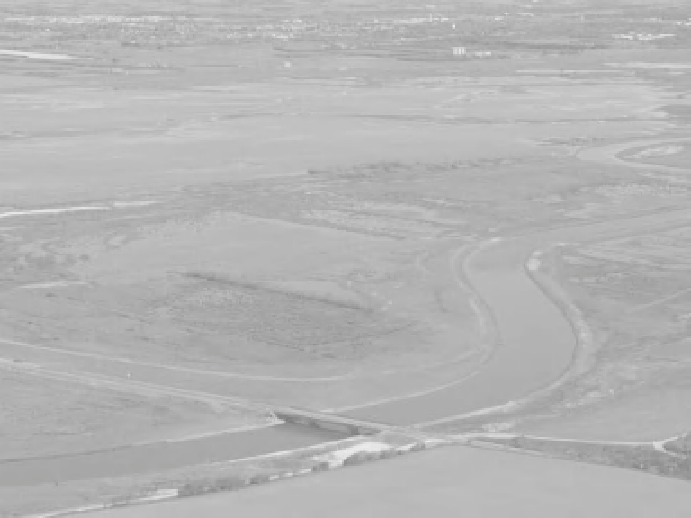Environmental Engineering Reference
In-Depth Information
(a)
(b)
Figure 17.5
River Skjern,
Denmark, (a) before and (b) after
restoration diagrams. (Adapted
from the Skjern River Restoration
Project 1999 .)
have been frequently inundated are covered with a
layer of clay or sandy clay. The expected diversity of
fl oodplain topography, soil type and vegetation has
often disappeared. The solution being adopted today is
both giving 'room to the river' and lowering the fl ood-
plain to allow more natural
connectivity
regimes
(RIZA 1996 ; Smits
et al
. 2001). Any sustainable fl ood
protection measures will necessitate imposing limits on
the amount of fl oodplain land that may be used for
purposes that are not directly river related, and the
most sustainable fl ood defence measures are likely to
be those that are tied in with the natural processes of
rivers. In addition, lowering the fl oodplain by removing
the clay deposits on the fl oodplain down to the original
profi le (economically viable through its use in brick
manufacturing) provides an increase in habitat






